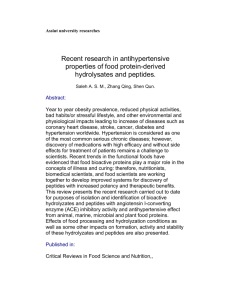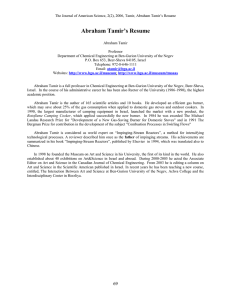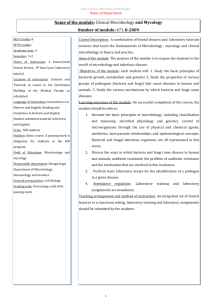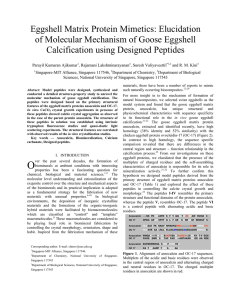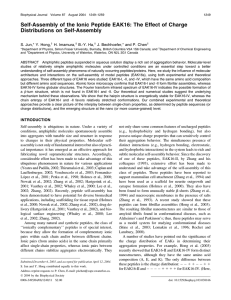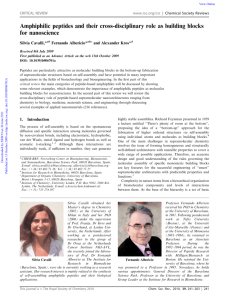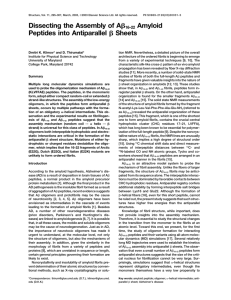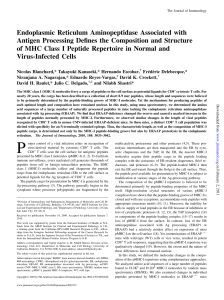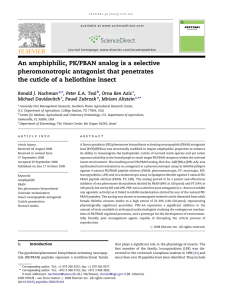rationally designed peptides for organophosphate biosensing
advertisement
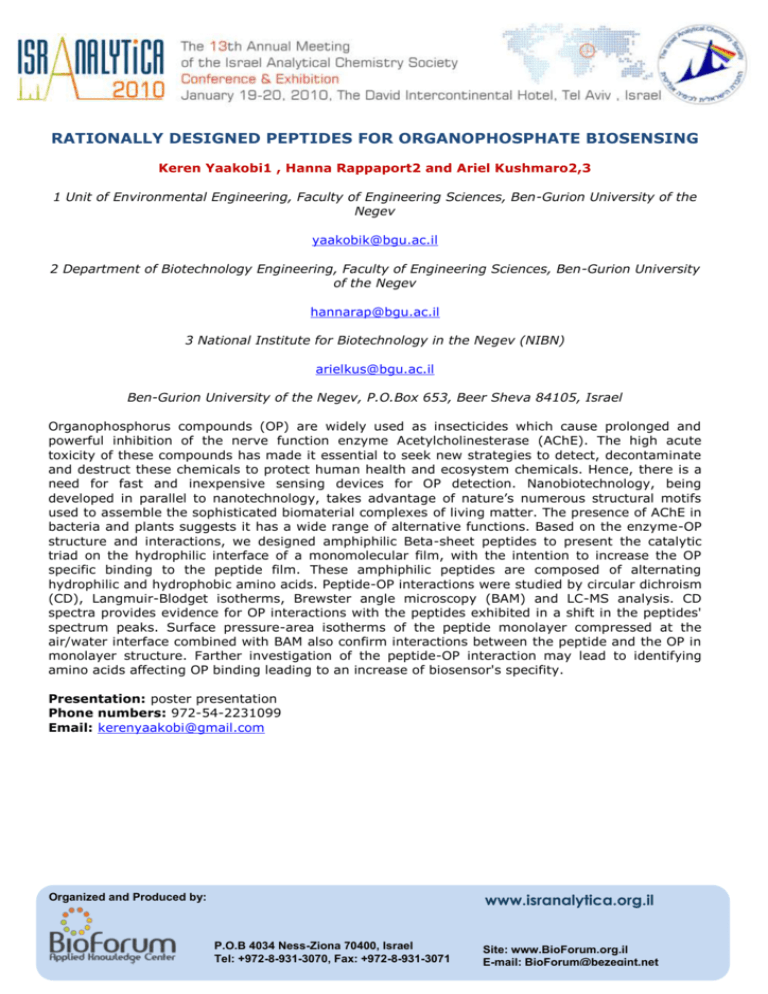
RATIONALLY DESIGNED PEPTIDES FOR ORGANOPHOSPHATE BIOSENSING Keren Yaakobi1 , Hanna Rappaport2 and Ariel Kushmaro2,3 1 Unit of Environmental Engineering, Faculty of Engineering Sciences, Ben-Gurion University of the Negev yaakobik@bgu.ac.il 2 Department of Biotechnology Engineering, Faculty of Engineering Sciences, Ben-Gurion University of the Negev hannarap@bgu.ac.il 3 National Institute for Biotechnology in the Negev (NIBN) arielkus@bgu.ac.il Ben-Gurion University of the Negev, P.O.Box 653, Beer Sheva 84105, Israel Organophosphorus compounds (OP) are widely used as insecticides which cause prolonged and powerful inhibition of the nerve function enzyme Acetylcholinesterase (AChE). The high acute toxicity of these compounds has made it essential to seek new strategies to detect, decontaminate and destruct these chemicals to protect human health and ecosystem chemicals. Hence, there is a need for fast and inexpensive sensing devices for OP detection. Nanobiotechnology, being developed in parallel to nanotechnology, takes advantage of nature’s numerous structural motifs used to assemble the sophisticated biomaterial complexes of living matter. The presence of AChE in bacteria and plants suggests it has a wide range of alternative functions. Based on the enzyme-OP structure and interactions, we designed amphiphilic Beta-sheet peptides to present the catalytic triad on the hydrophilic interface of a monomolecular film, with the intention to increase the OP specific binding to the peptide film. These amphiphilic peptides are composed of alternating hydrophilic and hydrophobic amino acids. Peptide-OP interactions were studied by circular dichroism (CD), Langmuir-Blodget isotherms, Brewster angle microscopy (BAM) and LC-MS analysis. CD spectra provides evidence for OP interactions with the peptides exhibited in a shift in the peptides' spectrum peaks. Surface pressure-area isotherms of the peptide monolayer compressed at the air/water interface combined with BAM also confirm interactions between the peptide and the OP in monolayer structure. Farther investigation of the peptide-OP interaction may lead to identifying amino acids affecting OP binding leading to an increase of biosensor's specifity. Presentation: poster presentation Phone numbers: 972-54-2231099 Email: kerenyaakobi@gmail.com www.isranalytica.org.il Organized and Produced by: P.O.B 4034 Ness-Ziona 70400, Israel Tel: +972-8-931-3070, Fax: +972-8-931-3071 Site: www.BioForum.org.il E-mail: BioForum@bezeqint.net



